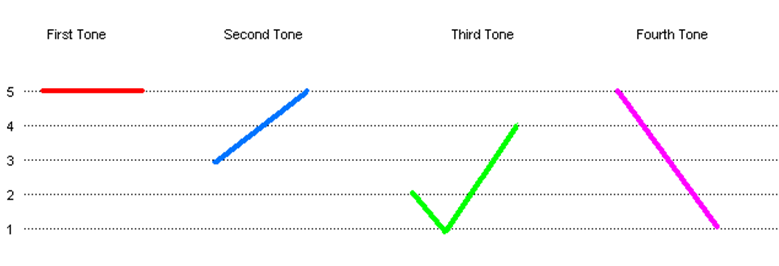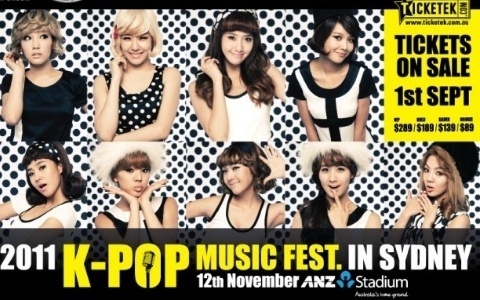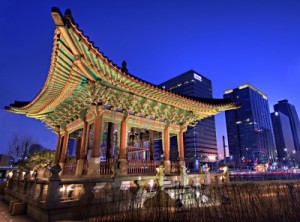Seoul and shopping
Seoul, South Korea has many shopping centres and markets throughout the city. The largest market is the Dongdaemun Market, which supplies stocks to thousands of retail fashion shops around the whole of Korea. Near Dongdaemun market are several large mall complexes that specialize in fashion goods of all sorts, from formal attire to casual, and from clothes to all kinds of accessories including bags and belts. Some of these are Migliore, Hello APM and Doota.
Myeong-dong is Seoul’s prime shopping and entertainment area in downtown, which contains some of the city’s top stores and fashion boutiques. The area has been subject to much investment and many of the financial institutions such as banks and investment companies are located in the area. Nearby is the Namdaemun market named after the Namdaemun Gate, a large market famous for selling “anything under the sun”. Insa-dong, a narrow street is also known for its antique stores, traditional teahouses art galleries.
Test of Proficiency in Korean (TOPIK)
I am very pleased to introduce one of my Korean students, Mr. Johnny Yuen, who has proudly accomplished his very first TOPIK test later last year. Johnny was only a beginner2 student when he took the test. Thus, I would like to share this information with more potential candidates who wish to get it for studying / working in Korea in the future. Furthermore, it is still worthwhile to diagnose your learning progress.
TOPIK, or Test of Proficiency in Korean is a Korean language test offered twice annually to foreigners in Korea and people studying Korean in other countries. TOPIK is administered by the Korea Institute of Curriculum and Evaluation (i.e. 한국교육과정평가원).
The test is divided into four parts: vocabulary & grammar, writing, listening, and reading. There is currently no oral section. Two versions of the test are offered: standard (S)-TOPIK and the business (B)-TOPIK. There are three different levels of S-TOPIK: beginner (초급), intermediate (중급), and advanced (고급). Depending on the average score and minimum marks in each section it is possible to obtain grades 1-2 in beginner, 3-4 in intermediate and 5-6 in advanced S-TOPIK. In B-TOPIK the scores in each section (out of 100) are added together to give a score out of 400.
In addition to Korea, TOPIK is available in the following countries: Japan, Taiwan, China, Mongolia, Vietnam, Philippines, Malaysia, Bangladesh, India, Indonesia, Iran, Pakistan, Kazakhstan, Uzbekistan, Tajikistan, Kyrgyzstan, Azerbaijan, USA, Australia, New Zealand, Canada, Paraguay, Argentina, Germany, United Kingdom, Spain, Italy, France, Turkey, Czech Republic, Egypt, Belarus, Russia, Brazil and Cambodia. Please visit www.topic.or.kr for the latest updates and news. Good luck to you, all!
– Ashley Jang (Korean language teacher)
Korean Names
Traditional Korean names typically consist of only one syllable, due in part to the Korean Naming Laws of 1812. There is no middle name in the Western sense. The three most common family names are often written and pronounced as “Kim” (김), “Lee” (이), and “Park” (박). Unlike English style, Surname comes first, followed by First name. First names can be started from single letter such as “박봄” and “김범”. The most common style for first name would be the one with two letters, such as “이민호” and “이승기”. Rarely, some people have more than three letters as you can find it from “박산다라”.
Many Koreans have their given names made of a generational name syllable and an individually distinct syllable, while this practice is declining in the younger generations. Married men and women usually keep their full personal names, and children inherit the father’s family name.
Korean names can be either sino-Korean names which have adapted from Chinese letters (e.g. 장은경: 張恩京) or pure-Korean names (e.g. 朴봄).
Why don’t you give yourself one cool Korean name? It will facilitate your Korean learning!
– Ashley Jang (Korean language teacher)
Korean New Year’s Day
Korean New Year, commonly known as 설날(Seol-nal) is the first day of the lunar calendar. Along with Chuseok it is one of the most important of the traditional Korean holidays. It consists of a period of celebrations, starting on New Year’s Day. Korean people also celebrate solar New Year’s Day on January 1 each year, following the Gregorian Calendar. The Korean New Year holiday lasts three days, and is considered a more important holiday than the solar New Year’s Day.
Korean New Year is typically a family holiday. The three-day holiday is used by many to return to their hometowns to visit their parents and other relatives where they perform an ancestral ritual. Many Koreans dress up in colorful traditional Korean clothing called hanbok. But nowadays, small families tend to become less formal and wear other formal clothing instead of hanbok.
떡국(Tteokguk) (i.e. soup with sliced rice cakes) is a traditional Korean food that is customarily eaten for the New Year. According to Korean age reckoning, the Korean New Year is similar to a birthday for Koreans, and eating Tteokguk is part of the birthday celebration. Once you finish eating your Tteokguk, you are one year older.
Sebae is a traditionally observed activity on Seollal, and is filial-piety-oriented. Children wish their elders (grandparents, aunts and uncles, parents) a happy new year by performing one deep traditional bow (rites with more than one bow involved are usually for the deceased) and the words새해 복 많이 받으세요(saehae bok mani badeuseyo) which translates to Receive many New Year blessings, or more loosely, “Have a blessed New Year.” Parents typically reward this gesture by giving their children new year’s money, or “pocket money,” (usually in the form of crisp paper money) and offering words of wisdom, 덕담 (deokdam).
King Sejong and Hangeul
Have you heard about “King Sejong the Great” and “Hangeul”?
King Sejong the Great (May 7, 1397 – May 18, 1450, who was the fourth king of the Joseon Dynasty of Korea) profoundly impacted Korean history with his introduction of hangeul, the native phonetic alphabet system for the Korean language.
Before the creation of Hangul, only members of the highest class were literate (hanja was typically used to write Korean by using adapted Chinese characters, while Hanmun was sometimes used to write court documents in classical Chinese). One would have to learn the quite complex hanja characters in order to read and write Korean. Further, despite modifications to the Chinese characters, hanja could prove cumbersome when transcribing the Korean language, due to considerable differences in grammar and sentence order.
King Sejong presided over the introduction of the 28-letter Korean alphabet, with the explicit goal being that Koreans from all classes would read and write. He also attempted to establish a cultural identity for his people through its unique script. While creating the alphabet, King Sejong encountered opposition of courtiers. First published in 1446, anyone could learn Hangul in a matter of days. Persons previously unfamiliar with Hangul can typically pronounce Korean script accurately after only a few hours study.
Each hangul letter is based on a simplified diagram of the patterns made by the mouth, tongue and teeth when making the sound related to the character. Morphemes are built by writing the characters in syllabic blocks. The blocks of letters are then strung together linearly.
There was a drama called “뿌리 깊은 나무” which was about King Sejong and the origin of Hangeul. This drama won “The best Korean drama award”. I would like to recommend it if you are a huge Korean drama fan.
Honorifics in Korean
When talking about someone superior in status, a speaker or writer usually uses special nouns or verb endings to indicate the subject’s superiority. Generally, someone is superior in status if he/she is an older relative, a stranger of roughly equal or greater age, or an employer, teacher, customer, or the like. Someone is equal or inferior in status if he/she is a younger stranger, student, employee or the like. Nowadays, there are special endings which can be used on declarative, interrogative, and imperative sentences; and either honorific or normal sentences. They are made for easier and faster use of Korean.
Honorifics in traditional Korea were strictly hierarchical. The caste and estate systems possessed patterns and usages much more complex and stratified than those we have now. The intricate structure of the Korean honorific system flourished in traditional culture and society. Honorifics in contemporary Korea are now used for people who are psychologically distant. Honorifics are also used for people who are superior in status. For example, older relatives, people who are older, teachers, and employers.
Korea’s Ultimate Crush: Yoo Jae Seok (유재석)
My students often ask me, “What’s the fastest way to improve my Korean?”, I would answer that “Watch more Korean TV shows. It’s actually better than Korean Dramas since they show the real people in real contexts.”
Today, I would like to talk about Korea’s Ultimate Crush, Yoo Jae Seok.
Lady Gaga, David Beckham and Angelina Jolie…Even these wonderful celebrities still have anti-fans since it is impossible to make everyone happy. However, a Korean show host, Yoo Jae Seok (he has so many nicknames as ‘Grasshopper, MC for the Nation , Yooruce Willis and Yoo Hyuk’) is famous for the minimum anti-fans.
Yoo Jae-Seok was born August 14, 1972 in Seoul, South Korea. He attended the Seoul Institute of the Arts, but had been unable to receive his degree due to his busy schedule as a comedian.
His first Grand Prix was for a program called “Happy Together Friends”, which concept based on TV personalities trying to find their school friends (five of them) out of many (false friends) who are sitting behind the desk. The show brought reminiscence upon the viewers’ school days, and became very popular. This Grand Prix is even more memorable, not just because it was Yoo’s first one, but it was from the broadcasting system where he debuted.
He hosted the shows X-Man, which soon grew to be very popular, and thus one of the most viewed shows in Korea. During those times, he gained much more popularity and many programs began to nickname Yoo as "MC of the Nation." And X-Man has gone on to success in international syndication.
Yoo is a part of the cast of the top-rated comic variety program Muhan Dojeon (무한도전), as the host-in-chief since 2005. Yoo also co-hosts Come to Play (놀러와) , Happy Together Season 3 (해피 투게더 3) with Park Myung-Soo.
Yoo hosted these talk shows for a long period of time (both over 5 years), but the ratings have been constantly high throughout the years. Similar, yet very different, Yoo tries his best to differentiate his hosting styles, both based on the guests and the settings they are situated in.
From 11 July 2010, he is hosting in a variety show called Running Man together with Ji Suk Jin, Kim Jong Kook,Gary (LeeSsang), Haha, Song Ji-hyo and Lee Kwang-su. Running Man has become an internationally popular show and the recent episode was filmed in Hong Kong which made many Hong Kong people excited.
Why don’t you watch Running Man via Youtube tonight? I bet you will love Yoo Jae Seok, just like me and every other Korean people!
Ashley (Korean Tutor)
Konglish
Two Korean friends are talking:
A: Gosh, I have an important exam tomorrow. So nervous!!
B: Jincha (Really)? Fighting!!
What do you mean by “fighting”? If you have watched any Korean dramas, you would know that what “Fighting” really means in Korean. It means “Cheer up”.
Because of such a prevalence of English in modern Korean culture and society, Korean people often use English words and end up code-switching without even realizing it. This is often referred to as “konglish” which are words adapted from English in ways that may seem strange to native English speakers. The words, having initially been taken from the English language, are either actual English words in Korean context, like 모터사이클 (motorcycle), or are made from a combination of Korean and/or English words (such as Officetel 오피스텔 Office + Hotel) which are not used in English-speaking countries. It can be considered a sublanguage, and common sentence structure or vocabulary mistakes made by Koreans have also been referred to as Konglish. ‘Sharp 샤프: mechanical pencil’ ‘Handphone 핸드폰: mobile phone’ ‘Skin 스킨: toner’ are very common examples of Konglish.
Is your Mandarin understandable?
Mandarin is a tonal language which contains five tones, which are four tones and a neutral tone (toneless tone). Every Chinese word is composed of a syllable. It is not necessary that every syllable will have all the five different tones, but when it does, each tone usually conveys a different meaning. For mandarin beginners, speaking mandarin in incorrect tones is often one of the major reasons why their Mandarin is not understandable by others. Even when you know the certain Chinese words or phrases very well, if you are not using the correct tones, others may still have little idea or even misunderstand of what you are talking about.
Now let’s have a look at the five tones in Mandarin Chinese (See picture).

Note: the fifth tone is a neutral tone, which is a toneless tone and has no tone mark.
The first tone is a flat tone and it is high but remains level. The second tone is a rising tone. The third is a falling-rising tone (looks like “V”). The fourth toe is a falling tone, and there’s also a neutral tone (toneless).
Take the syllable “ba” for example, the first tone “bā” means “eight”; the second tone “bá” means “to pull”; the third tone “bǎ” means “target”; the fourth tone “bà” means “dad”. Finally, the fifth tone “ba” is an auxiliary word and is often put at the end a sentence to make a suggestion sentence.
Apart from the original tones that most Chinese words have respectively, some words may need to change their tones into other tones in certain phrases. For example, the word “Yī” (meaning one) originally has the first tone, but when it is in the phrase “Yí gè rén” (meaning one person) it should change into the second tone.
So, you can imagine how confusing it would be if we are using incorrect tones in Mandarin Chinese!
Anne Ma (Mandarin Language Consultant)
R U READY FOR K-pop?
YG, JYP, CUBE, SM entertainment… Do you know what I am talking about? If you know, I guess you are a huge K-pop fan just like me!
K-pop is an abbreviation of Korean pop or Korean popular music which is a musical genre consisting of electro-pop, hip-hop, pop, rock, and R&B music originating in South Korea. In addition to music, K-pop has grown into a popular subculture among teenagers and young adults around the world, resulting in widespread interest in the fashion and style of Korean idol groups and singers.
The founding of South Korea’s largest talent agency, S.M. Entertainment, in 1995 by Korean entrepreneur Lee Soo Man led to the first K-pop girl groups and boy bands. Nowadays, we have many famous entertainment companies in Korea. Some major agents such as SM entertainment, YG, JYP entertainment and CUBE entertainment had burst onto the scene and were producing talent as quickly as the public could consume it.
Girl groups, such as So Nyeo Si Dae, Kara, T-ara, 4-minute and Miss-A, are representing their image by vivid and sexy fashion style together with lovely voice and catchy songs. Boy bands, such as Big Bang, CNBLUE, Beast, Super Junior and 2AM, are very famous for cool dancing, outfits and of course, their ultimate musical talent which is an outcome of a long-term training.
Okay then, who is your favourite? Mine? I love Big Bang (I am a huge fan of GD)!
If you want to feel the real K-pop, there is a concert in November at Sydney ANZ Stadium. Also did you know that we can enjoy K-pop channels on a national TV in Australia? It’s on SBS1 every Sunday from 8.30am for 2hours. Still want to know more? Why don’t you google K-Pop, download some songs/lyrics and sing it at a Korean Karaoke?
So, everyone! Let’s enjoy awesome K-pop!

Ashley Jang (Korean teacher)




Latest Comments